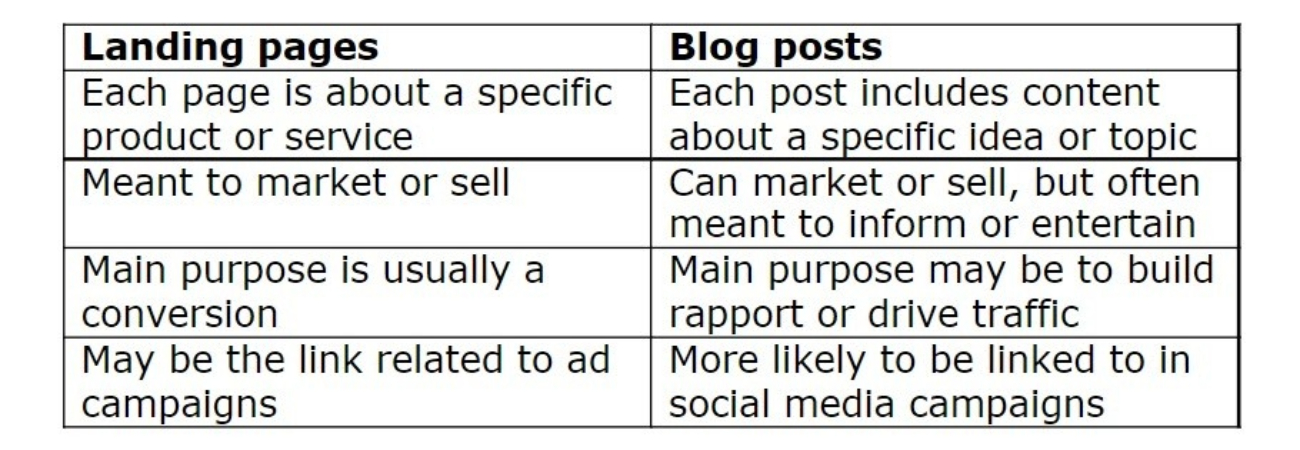Competitor Keywords offer a direct line to customers on the verge of making a purchase decision. When potential buyers search for terms like “Competitor vs. Your Brand” or “Competitor Alternatives,” they’re typically looking for that final push to confirm they’re making the right choice. Capturing these searches with targeted, well-structured comparison content can significantly boost your conversion rates.
This guide dives into the essentials of crafting comparison-focused content that addresses your audience’s needs with clarity and transparency. You’ll discover how to use competitor keywords to frame your product as the ideal choice, structure posts to highlight unique advantages, and build trust with readers looking for honest insights. This guide also includes real-world examples of successful posts that have effectively used competitor keywords, so you can see firsthand how to make this strategy work for you
Understanding the Power of Competitor Keywords in SEO Strategy

Competitor keywords are essential for capturing high-intent traffic from users who are comparing your product with others. Keywords like “Competitor X vs. Your Product” signal that the user is familiar with you and actively looking for more detailed insights to make a final decision. By proactively creating comparison content, you can control the conversation and steer users toward your product, rather than leaving that space to third-party review platforms like G2 or Capterra.
These keywords allow businesses to target users who are near the bottom of the funnel—typically the stage where they are ready to make a purchase. People searching for comparisons are generally looking for a direct answer: which product is best for their needs? By creating comparison posts, companies can present their product in the best light, highlighting its strengths and benefits over competitors. This targeted content also provides an opportunity to showcase unique features or superior performance, making it easier for users to understand why your product is the better choice.
The Three Types of competitor Keywords
There are several distinct types of competitor-focused keywords, each serving a different purpose and targeting specific search behaviors.
Competitor Name vs. Your Brand
The first type involves directly comparing your product with a competitor’s.This is the most common form of comparison keyword. Creating dedicated landing pages or blog posts around these comparisons helps capture high-intent traffic from users actively deciding between your product and a competitor’s. These pages should focus on showcasing how your product outperforms the competitor by emphasizing unique features, advantages, and benefits. A well-crafted comparison should align with the user’s needs and provide them with a clear reason to choose your product.
Competitor vs. Competitor
Another type is comparing two well-known competitors in the market, you can call this “crashing the party.” This strategy involves creating content that compares two popular products while subtly introducing your own product as a third option. Users searching for comparisons between established competitors might not initially be aware of your brand, but by inserting your product into the conversation, you can position it as a viable alternative. This tactic allows your product to stand out in a crowded space and can lead to increased interest and engagement.
Competitor Name Alternatives
The third type of comparison keyword targets users who are looking for alternatives to a specific product, such as “Competitor X alternatives.” These users are typically dissatisfied with their current solution or actively searching for better options. Content that presents your product as the top alternative, along with a thorough comparison of its features, performance, and pricing, can increase the likelihood of conversion. Since users are already in the mindset of replacing their current solution, presenting your product as the best option at this stage can be highly effective.
By leveraging these different types of comparison keywords, brands can attract a broad range of users at various points in their decision-making journey, helping them make an informed choice and ultimately choose your product.
Structuring Comparison Content for Maximum Impact
When it comes to creating content around competitor and alternative keywords, the way you structure it can significantly influence its effectiveness. Both blog posts and landing pages can serve the purpose of showcasing how your product compares to competitors, but blog posts often offer more flexibility and depth.
Blog Posts vs. Landing Pages

While landing pages are typically designed for straightforward conversions and are often optimized for specific keywords, blog posts allow for a more detailed and nuanced approach. Blog posts give you the room to provide in-depth comparisons, explain features in context, and explore various angles of the competition. This flexibility can be especially helpful when discussing multiple aspects of your product, such as unique features, pricing, and customer experience.
For example, if you’re comparing accounting software options, a blog post might explore a feature like automated tax filing in-depth, contrasting how your software makes the process seamless compared to competitors like QuickBooks or Xero. The ability to provide more content in a conversational tone, rather than a strict product description format, helps users understand your product better and builds trust in your brand.
Organizing by Product or Feature
Another key consideration when structuring comparison content is whether to organize it by product or feature. Both approaches can work, but organizing by feature is generally more effective. By focusing on features, you can naturally guide the user toward understanding how your product outperforms competitors in key areas.
For example, if your accounting software offers a unique invoicing feature, you could create a section that compares how your product automates invoicing versus other tools like FreshBooks or Wave. Instead of directly comparing each product side by side, focusing on invoicing as a feature lets you highlight why your solution is more efficient or user-friendly, without a rigid comparison.
Structuring by product, while helpful in some cases, can lead to a more direct, side-by-side comparison that doesn’t highlight your brand’s unique strengths as effectively. A feature-based structure lets you control the narrative by emphasizing the aspects that differentiate your product, helping you frame the comparison in your favor.
Additionally, this approach helps users who are interested in specific features or functionalities find exactly what they’re looking for. For example, someone might be primarily concerned with how well a software tracks expenses, so a feature-based comparison would let you showcase how your accounting software handles this better than a competitor. This increases the likelihood of conversion by addressing specific pain points directly.
By focusing on features, you can build a more compelling argument for why your product is the best choice for users, making the comparison content more effective in terms of both engagement and conversion.
Highlighting and Framing Your Product’s Strengths
When creating comparison content, you need to highlight your product’s strengths early and often. This approach ensures that users are immediately introduced to what makes your product stand out from the competition.
Focusing on Your Product First
The company’s product should be emphasized right at the beginning of the comparison. Users who land on your page are already evaluating options, so it’s important to introduce your product early to seize their attention. Focusing on your product first provides an opportunity to present its unique features and benefits upfront, making it clear why your solution is a strong contender from the start.
For example, if your accounting software excels in real-time reporting, you might lead the post by highlighting how this feature benefits users looking for fast insights, setting the stage for why your software stands out. By doing so, you give users the information they’re searching for early on, which helps guide their thought process toward making a decision.
Framing with Your Brand’s Unique Value Proposition
Framing the comparison content around your brand’s unique value proposition (UVP) is crucial to ensuring that the narrative is consistent and tailored to your target customer. For example, if your accounting software is specifically built for small businesses, you should frame the comparison in a way that speaks directly to this audience. Explain why your product is the ideal choice for entrepreneurs or small business owners compared to larger enterprise-focused solutions.
By emphasizing the aspects of your product that align with your brand’s core strengths, you ensure that the comparison serves as a tool for educating users about your product’s true value. For instance, if your software is known for its simplicity and ease of use, framing the content around this unique selling point can effectively appeal to users who may feel overwhelmed by more complex tools.
Balancing Bias and Transparency
While it’s essential to highlight your product’s strengths, it’s also important to remain transparent and acknowledge areas where competitors may have an edge. This balance between bias and transparency helps build trust with users. Being upfront about your product’s limitations or areas where a competitor might perform better shows honesty and fosters a more credible relationship with your audience.
For example, if your accounting software lacks certain integrations that a competitor offers, you can mention it but also explain why that feature may not be essential for your target audience, or discuss other advantages your product offers. This approach ensures your content doesn’t come across as overly promotional or biased, and positions your product as a thoughtful solution, which can be more persuasive than pure salesmanship.
Using Alternative Keywords to Capture High-Intent Traffic

When it comes to driving high-conversion traffic, targeting “alternative” keywords is a powerful strategy. These keywords signal that the user is seeking a replacement or better option than what they are currently using. People searching for alternatives are often already dissatisfied or frustrated with their current solution, and they are highly motivated to find a better fit. As a result, these searches have a very high intent to convert, making them a goldmine for businesses looking to attract decision-ready customers.
Alternative Keywords as Conversion Gold
As we said above, alternative keywords offer an incredible opportunity to capture users who are at the tail end of the buyer’s journey. These users are often considering switching products or looking for a better solution, so they’re typically more receptive to learning about alternatives that align more closely with their needs. For example, when someone types “Alternatives to Xero accounting software” or “Best alternatives to QuickBooks,” it’s a strong indicator that the user is exploring other options.
By optimizing content for alternative keywords, you can position your product as the best solution for those seeking a replacement. These users are often frustrated with their current provider, whether due to poor user experience, cost, lack of features, or other pain points. This opens the door for your product to step in as a seamless solution that addresses those issues directly. Furthermore, alternative searches usually have lower competition than direct product or brand searches, giving you a better chance to capture organic traffic from users who are primed for conversion.
For instance, if your accounting software is known for its superior customer support, targeting keywords like “Best alternatives to QuickBooks with customer support” would help you reach users who are actively looking for a better service experience. Once they find your content, they’ll see how your product stands out in this area, increasing the likelihood of a conversion.
Structuring Alternative Pages
When it comes to creating content optimized for alternative keywords, the structure of the page or post is key to ensuring that your product is presented in the best possible light, while still maintaining a balanced and fair comparison. Here’s a simple framework to follow:
Introduce Your Product as the Top Alternative
Start by framing your product as the best alternative to the competitor. Focus on the specific pain points that the competitor’s users are likely experiencing and how your product solves those problems. Be clear and confident about how your product provides a better solution. However, it’s essential to maintain a professional and objective tone, emphasizing benefits without disparaging the competitor.
Example: If you’re positioning your accounting software as the best alternative to QuickBooks, you could start by saying: “If you’re looking for an accounting solution that offers intuitive usability and 24/7 support, [Your Product] is the ideal alternative to QuickBooks.”
Mention Other Competitors, but in a Neutral Way
After presenting your product as the primary alternative, it’s important to mention other competitors to show that you are offering a comprehensive, unbiased comparison. However, you should mention these competitors in a neutral, factual manner—highlighting their strengths where applicable but clearly explaining why your product is still the better choice. This helps maintain a level of transparency and avoids turning the content into a one-sided sales pitch.
Example: “While QuickBooks and Xero offer various features for small businesses, they can sometimes be overwhelming for new users. [Your Product] focuses on simplicity, with a user-friendly interface and robust reporting tools designed to streamline accounting for small business owners.”
Support Claims with Data and Testimonials
To enhance credibility and further sway decision-makers, back up your claims with relevant data, case studies, or testimonials. Showing how your product has successfully helped other users or businesses can reinforce the idea that it’s a proven alternative that others are already using and benefiting from.
Example: “Businesses who switched from QuickBooks to [Your Product] have reported a 30% reduction in time spent on monthly financial tasks and a 40% increase in overall satisfaction with customer support.”
Close with a Clear Call to Action
Finally, ensure that your page or post ends with a clear, compelling call to action (CTA). The goal is to drive users to take the next step—whether it’s scheduling a demo, starting a free trial, or contacting sales. Your CTA should reflect the high intent of users coming from alternative keyword searches and provide an easy path for them to take action.
Example: “Ready to see how [Your Product] can simplify your accounting process? Sign up for a free trial today and start making the switch.”
By structuring alternative pages this way, you not only highlight your product as the top choice but also provide a balanced, helpful resource for users who are seriously considering a change. The transparency, neutrality, and focus on benefits will resonate with users and increase the likelihood that they’ll choose your product over the competition.
Overcoming Common Objections to Competitor Keywords
When creating comparison content, many companies have reservations about mentioning competitors directly. These concerns typically arise from fears of promoting a competitor’s product, potential legal issues, or simply the reluctance to draw attention to what might be perceived as a rival brand. However, addressing these concerns head-on and demonstrating how comparison content can actually benefit your brand can help dispel any doubts.
Addressing Concerns
One common objection is the fear of promoting competitors by mentioning their products in comparison content. Some brands are worried that by referencing a competitor, they might inadvertently lead potential customers to explore other options more deeply or even choose the competitor instead. However, this concern overlooks the potential for engaging users who are already considering alternatives. People who are searching for competitor comparisons are likely in the decision-making process and open to learning about new solutions. By creating comparison content, you can actively participate in that decision-making process, rather than leaving it up to review sites or third-party platforms where you have no control over how your brand is represented.
Additionally, there’s the concern of potential legal issues—companies might fear that by mentioning a competitor’s name, they could open themselves up to legal challenges or accusations of trademark infringement. While it’s true that this risk exists, it’s generally mitigated by ensuring that the content remains factual, accurate, and objective. Simply comparing features or pricing is not usually grounds for legal action. In fact, many large corporations (such as Microsoft or Apple) engage in healthy, open comparison advertising, proving that addressing competitors directly can be done without violating legal norms.
Rather than avoiding competitor keywords out of fear, companies should view them as an opportunity to influence the conversation and demonstrate their product’s strengths to users who are actively looking for a solution. Comparison content allows you to be part of the dialogue, offering a persuasive argument for why your product is the best fit for the user’s needs.
Maintaining a Neutral, Non-Disparaging Tone
Another hesitation companies might have when writing comparison content is the desire to avoid sounding too biased or overly critical of competitors. While it’s important to highlight your product’s strengths, using a disparaging or negative tone towards competitors can backfire. It can make your brand seem unprofessional or insecure and may alienate potential customers who don’t appreciate negative commentary about brands they trust.
A neutral tone positions your company as a thoughtful, professional alternative without resorting to negative tactics. Instead of focusing on bashing competitors, the emphasis should be on explaining why your product might be a better fit for specific needs or pain points. For instance, if your accounting software has superior customer support or a more intuitive interface than a competitor like QuickBooks, your content should focus on the benefits of these features rather than criticizing the competitor for lacking them.
This approach doesn’t just help maintain a professional image; it also positions your company as confident in its own product. By focusing on your strengths and letting the comparison speak for itself, you avoid turning off potential customers who may feel that a direct attack on their current provider is unnecessary or unwarranted.
For example, a blog post comparing your accounting software with Xero could say, “While Xero excels at providing extensive integrations, [Your Brand] offers a more streamlined user interface, designed specifically for small business owners who prioritize ease of use over advanced customization.” This is a factual, neutral statement that highlights your software’s strengths without disparaging Xero or any other competitor.
By keeping the tone neutral and professional, you present your product in a way that is both respectful and confident. Users will appreciate the transparency and thoughtful comparisons, which ultimately helps your brand build trust and credibility.
Optimizing Comparison Content for Conversions
Optimizing comparison content for conversions isn’t a one-time task—ongoing tweaks based on user feedback and performance data are crucial for sustained success. By refining the structure, updating product features, and focusing on high-converting keywords, you can continuously improve rankings and increase conversions over time.
At Meta Suite, we specialize in creating and optimizing conversion-driven content. Contact us today to elevate your SEO strategy and drive more high-intent traffic to your site.


